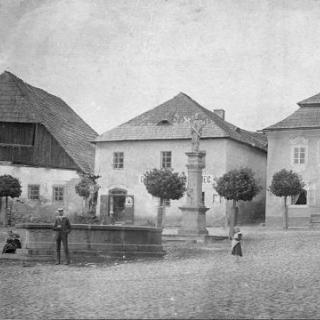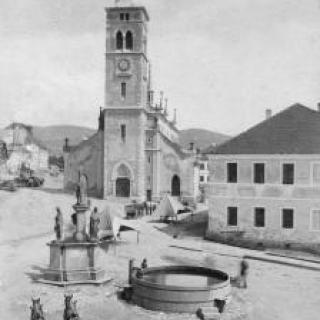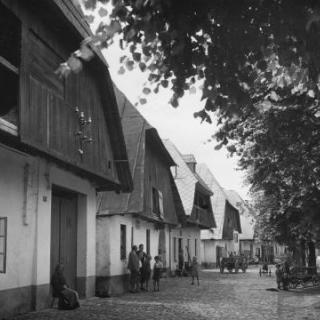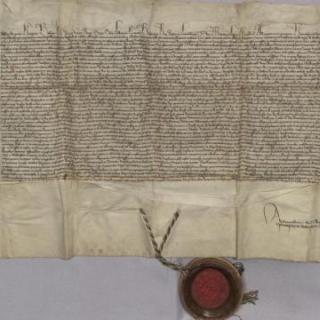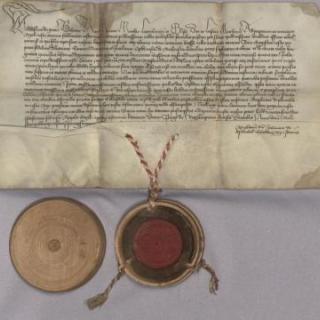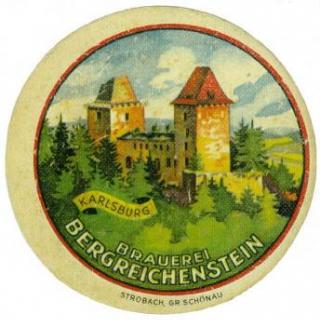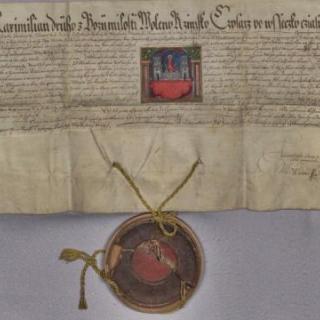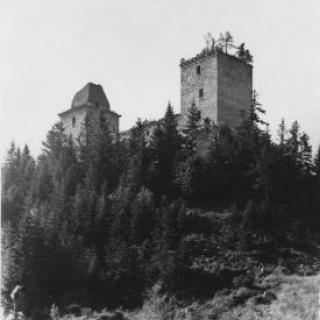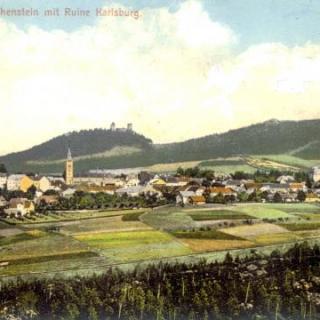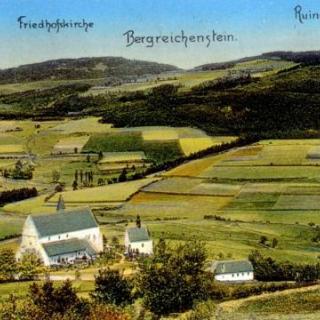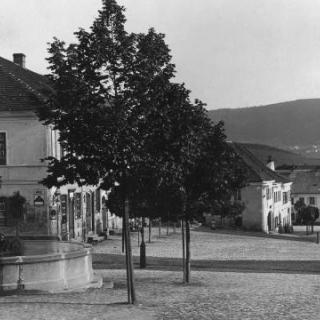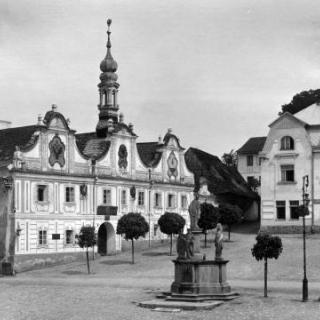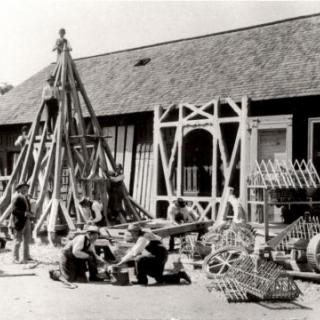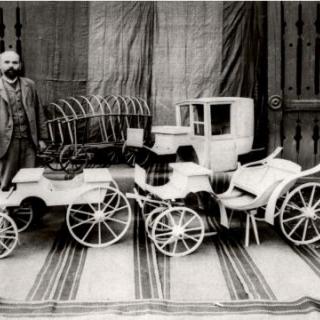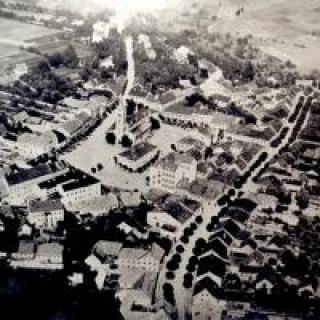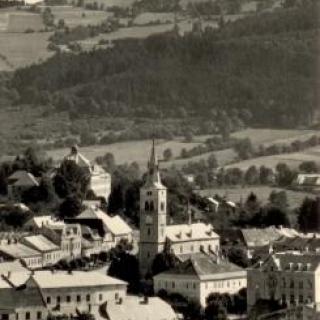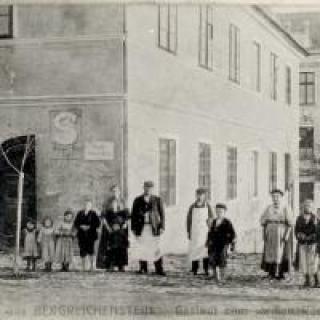History basics
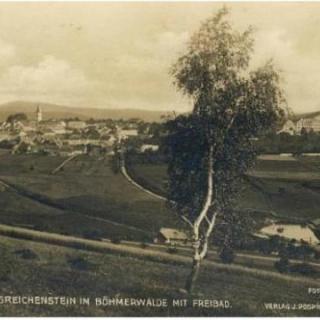
The rise
For the first time, the region was populated by Celts in the 3rd and 5th century B.C. What has been preserved from that times are two Celtic fortified settlements in the town surroundings, namely Sedlo and Obří hrad.
As the region used to be covered with deep primeval forests, the propagation of settlements was a slow process depending on gradual deforestation. Farms were founded on such clearings. Lídlovy Dvory, Trnové Dvorce and others were such farmyards. Some of them disappeared after some time, others evolved into villages and their current names such as Červená, Tuškov, Svojše or Žlíbek indicate who was their founder.
The town of Kašperské Hory emerged from a combination of such scattered farmyards, too.
At that time, the people already knew that the local rocks were rich in gold. Gold panning in the local streams and rivers was replaced by the deep mining at the turn of the 14th century. The history of this town started at that time…
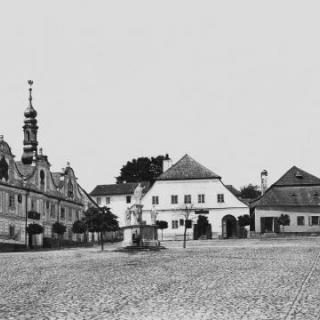
14th century
As it was gradually granted the attributes of a municipality and started to use the town seal (the second oldest seal in the country after the city of Brno), the town blossoming culminated in the 14th century under the rule of John of Luxembourg.
1300
The exact date of the erection of the miner´s church of Saint Nicolas is not known. Its age is documented by a number of frescos preserved in the church interior, the style of the building correspond to the turn of the 13th and 14th century, i.e. to the end of the Romanesque architecture era and the onset of the early Gothic style.
1338
The town of Kašperské Hory was mentioned for the first time in the deed of lien of John of Luxembourg signed on October 7, 1338 referring to Kašperské Hory as one of the most important gold mining localities in Bohemia.
1356 – 1361
The builder Vít Hedvábný built the majestic castle of Kašperk over the rich town by order of the emperor Charles IV. A new merchant´s route started to be developed in the same year as the Kašperské Hory branch of the Golden Path leading to the Bavarian city of Passau.
The 2nd half of the 14th century
Originally dedicated to Saint Linhart, the second church in Kašperské Hory, the church of St. Margaret was built in the second half of the 14th century
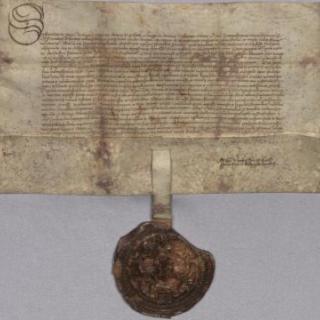
15th century
Almost 40 larger gold mines and drifts were operated in Kašperské Hory in the 15th century.
October 13, 1436
Sigismund of Luxembourg confirmed both general and individual privileges, rights, freedoms of burghers and inhabitants of the town of Kašperské Hory (Reichenstein).
December 18, 1453
Ladislaus the Posthumous confirmed the town privileges granted by previous monarchs, the insertion confirmation of the privilege of the King John of Luxembourg as of September 29, 1345 on the remission of the customs fees, the insertion confirmation of Wenceslaus IV as of March 25, 1399 with the inserted privilege of Charles IV as of January 5, 1366 on the merchant´s obligatory overnight stay in Kašperské Hory and the insertion confirmation of Sigismund of Luxembourg as of October 13, 1436.
December 21, 1479
At the request of Kašperské Hory residents, the King Vladislaus II the Jagellonian confirmed the privileges granted to them by the Czech Kings John of Luxembourg, Wenceslaus IV, Sigismund of Luxembourg and Ladislaus the Posthumous.

16th century
1551
On May 2, 1551, Kateřina Adlarová of Březnice, the widow of Jiřík of Lokšany, sold a free house (a house located inside the town walls but not subject to the town jurisdiction) in the town of Kašperské Hory including a malt house and brewery, yard, garden, water pipeline, the farmyard Homolov including three ponds and land, and other house and two and half mills.
1551
The foundation of the burghers´ brewery in Kašperské Hory. Despite the reluctance of the residents, the production was discontinued as late on October 1, 1947. 123 burghers of Kašperské Hory were granted the brewing right. The beer of Kašperské Hory was brewed for the town and surrounding villages´ residents. After the discontinuation of the brewing, the brewery premises were used as a storage of beer delivered from Strakonice and as a fruit juice production plant for several years.
1572
At the request of the mayor and councillors, Maximilian II granted a new seal and coats of arms to the town of Kašperské Hory.
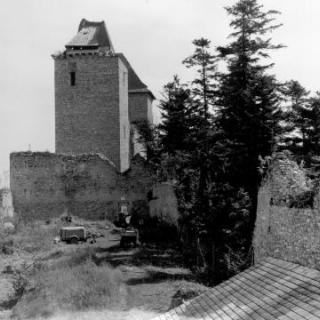
17th century
The town prospered until the Thirty Years´ War (1618 – 1648). Then, the gold mining decline brought a period of comedown. At that time, just little bit more than 100 kg of gold was extracted from the local mines.
1616
The town purchased the castle of Kašperk that was already desolated at that time.
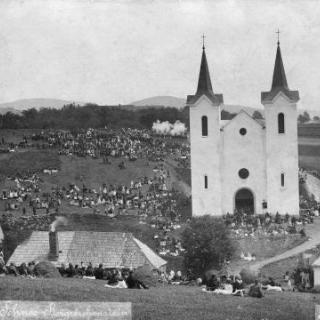
19th century
The half of the 19th century saw a rapid development of the social life. The town became the seat of various authorities and educational institutions. First larger companies including but not limited to wood processing enterprises were established in the town. The town became the seat of the district court.
1803 – 1846
The gold mining was relaunched in drifts in the town surroundings.
1850
The pilgrimage church of Our Lady of Snows was built.
1872
The entrepreneur Bernard Fürth of Sušice founded the first match production plant at the place called Horrer´s. It´s operation is documented until 1902.
1878 – 1926
A renamed wood processing vocational school prepared workers for such professions as joiner, carpenter, wood turner, cooper, wheelwright etc. in Kašperské Hory. The Czech car bodybuilder Josef Sodomka attended this school.
1882
A large match production plant was founded in the Amálino valley on the Zlatý potok by J. H. Simlick, an Englishmen born in Bavaria.

20th century
1912
The town of Kašperské Hory was electrified. The power used to be supplied from the newly commissioned power plant at Čeňkova Pila.
1930
2 289 people lived in the town in this year. Out of it, 186 were Czechs.
1938
In October 1938, Kašperské Hory was annexed to the Third Reich by virtue of the Munich Agreement. It became a part of Czechoslovakia again after the liberation by the U.S. army in May 1945.

